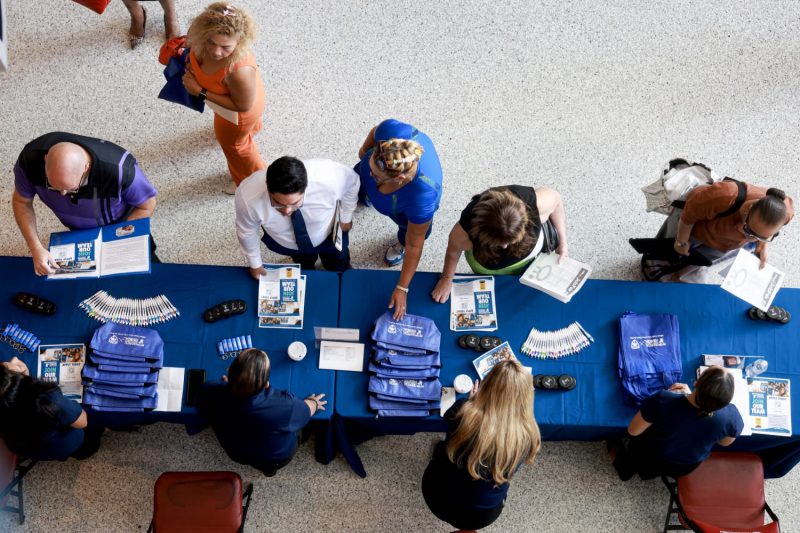
Job Hunt Frenzy: Over 28% of Americans Seeking New Opportunities — A Decade-High Trend!
The recent surge in Americans searching for new job opportunities has raised concerns and discussions about the current state of the job market. Surpassing a rate of 28%, the highest in over a decade, this trend reflects a significant shift in the workforce dynamics. Several factors may have contributed to this increase in job searches, ranging from economic uncertainty to changing work preferences among employees.
One of the key drivers behind this shift is the impact of the COVID-19 pandemic on the job market. The pandemic brought about widespread economic disruptions, leading to layoffs, furloughs, and closures of businesses. Many individuals found themselves reevaluating their current employment situations and seeking out new opportunities that offer stability and security. The pandemic also accelerated the adoption of remote work, leading some workers to reconsider their career paths and explore options that offer more flexibility in terms of location and working hours.
Moreover, the changing demographics of the workforce may also be influencing the high rate of job searches. As new generations enter the workforce with different expectations and values, employers are being challenged to adapt their practices to attract and retain talent. Younger workers, in particular, are placing a greater emphasis on factors such as work-life balance, career development opportunities, and corporate social responsibility. Companies that fail to meet these evolving needs may find themselves struggling to retain employees and facing higher turnover rates.
Additionally, technological advancements and the rise of the gig economy have provided workers with more options and flexibility in how they earn a living. Platforms such as Uber, Airbnb, and Upwork allow individuals to work on a freelance basis, giving them the freedom to choose when and where they work. This shift towards a more decentralized and independent workforce has enabled workers to explore diverse career paths and opportunities beyond traditional employment models.
In response to the increased job searches, employers must adapt their recruitment and retention strategies to attract and retain top talent. Offering competitive salaries, benefits, and perks, as well as prioritizing employee well-being and professional development, can help organizations stand out in a competitive job market. Investing in training programs, mentorship opportunities, and diversity and inclusion initiatives can also contribute to creating a workplace that appeals to a diverse range of candidates.
In conclusion, the surge in Americans searching for new job opportunities reflects a complex interplay of economic, social, and technological factors shaping the current job market. Employers must recognize and respond to the changing needs and expectations of the workforce to remain competitive and attract top talent. By embracing flexibility, innovation, and employee-centric practices, organizations can navigate these shifts and build a thriving workforce for the future.
